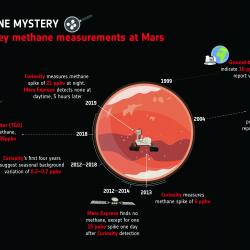In the middle of the 18th century, during the observation of the transit of Venus of 1761, the astronomer M. V. Lomonosov (portrait) reported the presence of a halo which he attributed to the existence of an atmosphere around Venus.
Since the 19th century, when the phase and the angular size of the planet permitted observations, dark spots or marks, generally in the equatorial region of the crescent, have been drawn and later photographed.
It was in 1932 that CO2 was identified on Venus for the first time by observation of absorption bands in the near infra-red, around 0.8 mm, in the reflected solar spectrum, by Adams and Dunham.
Constituents other than CO2 (CO, HCl, HF) were discovered with the instrumental techniques developed after the Second World War, including spectroscopy in the infra-red, but it was only in 1967, with the descent module of the Soviet probe Venera-4, that the concentrations of these constituents were measured in-situ for the first time.


